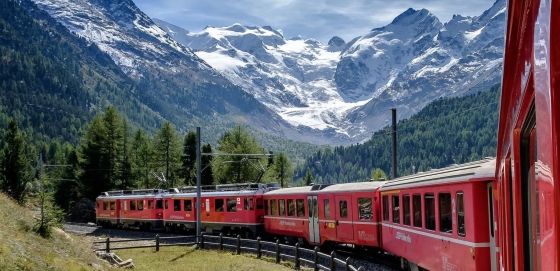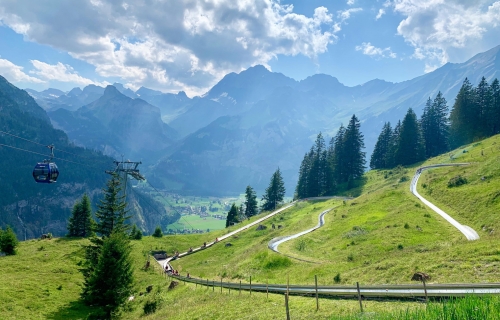Crans-Montana Temperatures: Monthly Averages and Year-Round Insights
On this page, we’ll explore temperature statistics for Crans-Montana in Canton of Valais, Switzerland, including day and night variations and monthly averages. We’ll also compare the annual temperature to other cities in Switzerland.
Monthly Temperature Averages
Depending on the time of the year, temperatures range from pleasant to very cold in Crans-Montana. Average maximum daytime temperatures range from a pleasant 19°C in July, the warmest time of the year, to a very cold -4°C during cooler months like January. At night, minimum temperatures typically average around -13°C during these months.
The chart below illustrates the average maximum day and minimum night temperatures in Crans-Montana by month:
The coldest temperatures are usually recorded between 4 AM and 6 AM, while the hottest temperatures occur near 3 PM, at the peak of the sun's warmth. July, the city’s warmest month, receives 270 hours of sunshine.
The chart below shows the average temperature throughout the year:
January, the city’s coldest month, sees about 130 mm of rainfall spread over roughly 15 days. It records 95 hours of sunshine of sunshine.
Annual Temperatures in Switzerland Compared
The map below shows the annual temperature across Switzerland. You can also select the different months in case you are interested in a specific month.
 very warm
very warm
 warm
warm
 pleasant
pleasant
 moderate
moderate
 cold
cold
 very cold
very cold
Crans-Montana Temperatures Compared World Wide
Crans-Montana’s average annual maximum temperature is 8°C. Let’s compare this with some popular tourist destinations:
In Barcelona, Spain, the average annual temperature is around 21°C, resulting in warm summers and mild winters throughout the year.
In Toronto, Canada, the average annual temperature is 13°C, with snowy winters and warm summers.
Osaka, Japan, offers a similar climate to Tokyo, with an average annual temperature of 22°C.
In Tokyo, Japan, the average annual temperature is 21°C, expect warmer summers and milder winters.
How does the temperature feel?
Humidity is an essential factor in how you experience temperature. When a warm period is accompanied by high humidity, it results in a higher perceived temperature. This is especially true when temperatures exceed 25°C, as it can cause greater discomfort.
On the other hand, in cooler months, especially when temperatures dip below 10°C, high humidity can intensify the cold. This makes the air feel much colder than it really is.
In Crans-Montana, during the coolest month, January, you will experience 78% humidity, which is considered high. This is accompanied by an average maximum temperature of -4°C. Explore our detailed page on humidity levels for further details.
How are these Temperatures Measured?
Generally, temperature data depicting climate is usually given over a 30-year average in order to reduce short-term fluctuations and reveal better long-term trends in climate conditions.
This temperature data is taken from land-based thermometers, ocean buoys, ships, and satellites. These measurements are transmitted to weather stations and climate centers around the globe where they are processed, averaged, and analyzed in order to monitor the trends and create climate models.
Temperatures in the Mountains
Although not all regions have mountains, elevated areas exhibit distinct temperature variations.
- Sun Exposure: Sunlit slopes tend to be warmer, while shaded areas remain cooler.
- Altitude Effects: Temperatures drop by approximately 6°C for every 1,000 meters of elevation, creating distinct microclimates.
For more detailed information about Crans-Montana’s weather, including monthly rainfall, sunshine hours, and humidity levels, visit our Crans-Montana climate page.
Current temperature in Crans-Montana












